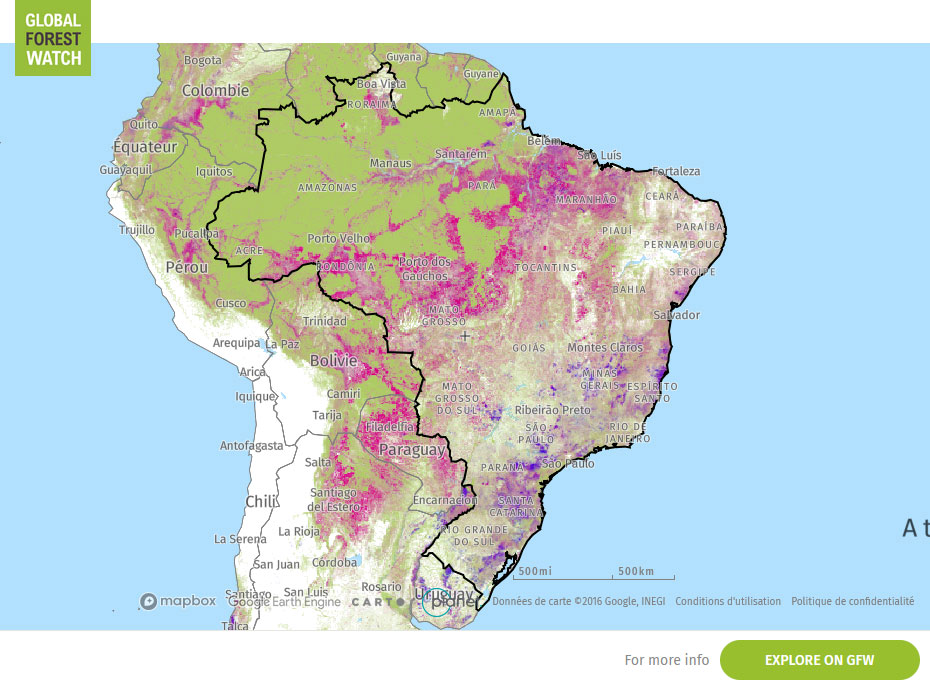Forest resources and context of Brazil
Brazil represents the second largest forested area in the world, second only to Russia.

Land surface
835.8million ha
Forest cover
493.5million ha
Production forest
63.8million ha
Forest ownership
61.8% publicly
Forest resources in Brazil
Types of forest
Brazilian forests can be classified broadly as:
- Amazon rainforest,
- Atlantic rainforest (Mata Atlântica),
- central ‘cerrado’ savannah,
- arid ‘caatinga’
- and the wetlands of the Pantanal
(ITTO, 2011)
According to the FAO (2015), Brazil has around 493.5 million hectares of forested land, which constitutes 58% of the total land area. Brazil represents the second largest forested area in the world, second only to Russia (Brazilian Forestry Service). Around 485 million hectares are primary or otherwise naturally regenerated forests, while the remaining 7.7 million hectares is planted forest, mainly consisting of introduced species such as Eucalyptus and Pine, and to a lesser extent Acacia, Teak and Rubber wood (TFT). The vast majority of the country’s planted forests are located in the south of Brazil, while the native forests that provide timber are almost exclusively part of the Amazon. Forest land cover in Brazil has declined over the last 25 years, with an average rate of deforestation in the Amazon of around 6,000 square km a year since 2010 (figure derived from official National Institute of Space Research (INPE) data).
Forest ownership in Brazil
Forests can be publicly or privately owned. Public lands subject to forest management are covered with natural forests (there is no plantation management on public lands) and can be carried out by private companies or by traditional communities. The management of natural forests may also occur on private land. Around 60% of the forest area in Brazil has been identified as “Permanent Forest Estate” (PFE) (ITTO, 2011). PFE is defined as: Land, whether public or private, secured by law and kept under permanent forest cover. This includes land for the production of timber and other forest products, for the protection of soil and water, and for the conservation of biological diversity, as well as land intended to fulfil a combination of these functions. Forest area that is not classified as PFE is open for conversion to other land uses. The PFE area is roughly divided into Production and Protection areas. The Production PFE is separated into:
- FLONAs (loresta nacional (national forest) – type of conservation units),
- extractive reserves,
- sustainable development reserves,
- legal reserves and permanent preservation areas on private land.
In general, Protection PFE is forest inside designated protected areas, where timber production and other forms of resource exploitation such as mining and commercial hunting are prohibited. Protection PFE in Brazil includes: units of integral protection (federal and state) and indigenous lands.
key figures
| Land surface | 835.8 million hectares |
|---|---|
| Forest cover | 493.5 million hectares (59%); mostly primary or other naturally regenerated forest 1.6% (7.7 million hectares) of planted forest |
| Production forest | 63.8 million hectares designated for production |
| Forest ownership | 61.8% publicly owned 20.6% privately owned 17.6% unknown ownership |
| Annual change rate | -0.4% per year; over the past 25 years (1990-2015) |
Source: FAO, 2015
See also: Global Forest Ressources Assessment 2020, FAO



